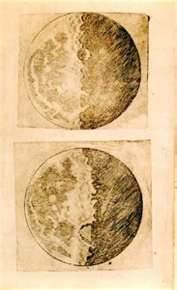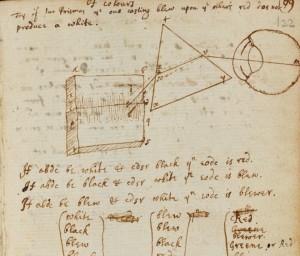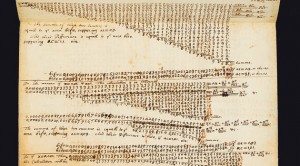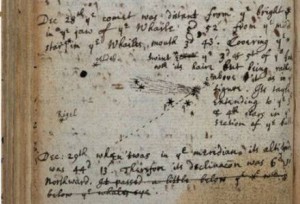We should note the force, effect, and consequences of inventions which are nowhere more conspicuous than those three which were unknown to the ancients, namely printing, gunpowder, and the compass. For these three have changed the appearance and state of the whole world…
Francis Bacon, Novum Organum, Aphorism 129
Although the printing press had been invented by the Chinese, Koreans and Turks before the fifteenth century, it was the innovation of the moveable type, alphabetic press that proved to be a “psychological breakthrough of the first order” (Ong, 1979, p. 11). At the start of her lucid and scholarly book The printing press as an agent of change, Eisenstein asks the key question: “What were some of the most important consequences of the shift from script to print?” (p. xi). This paper will focus specifically on the effects of this shift on thinking and consciousness in the development of the empirical scientific method.
Within fifty years of Gutenberg’s invention in the 1440s, in Mainz, printing presses had been established in all the major cities across Europe. The printing press initiated a ‘communications revolution” (Eisenstein, 1979, p.44) that changed the dissemination of knowledge, the storage and retrieval of information, systems of education and the “communication networks used by learned communities throughout Europe” (Eisenstein, p. xvi). Much of the research that Eisenstein explores situates the shift to print within a “large cluster of relatively simultaneous, closely interrelated changes” (p.44) that drove the social, intellectual and cultural developments from the Renaissance to the early modern period; dismantling the taboos and powers of the Catholic Church and feudal society, leading the ‘democratization’ of knowledge and widespread literacy, the development of modern capitalism and industrial production, and the rise of modern science (Eisenstein, pp.43-159; Ong, p. 116).
With the fall of Constantinople in 1453 to the Ottoman Turks, scholars fled to Europe. The early Renaissance period in Florence, Italy saw the rise of Humanism, and the Latin translation of standardized texts of the ancient authors – Plato, Aristotle, Ptolemy, Galen, preserved in the East by the Byzantine and Arab cultures. Because the bulk of the texts printed in the first century of the press were translations of ancient texts, many scholars refuse to acknowledge that printing had any significant effect on the development of the new theories in science. For Eisenstein, however, it was this intense examination, comparison and critique of the received wisdom of the ancients that fueled intense intellectual ferment: “contradictions became more visible; divergent traditions more difficult to reconcile. …Even while confidence in old theories was weakened, an enriched reading matter also encouraged the development of new intellectual combinations and permutations” (pp. 74-5).
EFFECTS of PRINTING on Thinking and Consciousness
The effects of printing become clear in the gradual, but radical changes in the storage and retrieval of information – the scientific text evolves as a resource to be consulted with the refinement of indexes, tables of contents, catalogues, titles; with standardized pictures, diagrams, tables, charts and maps. Encyclopaedias used “vast networks of correspondents” to send in corrections and new information that would be included in the next edition. This was the beginning of authentic scientific collaboration and the ongoing accumulation, editing and preservation of knowledge in printed form that was central to the rapid advances made during this time (Eisenstein, p. 109-113).
After the advent of printing the transmission of written information became much more efficient. It was not only the craftsman outside the universities who profited from new opportunities to teach himself. Of equal importance was the chance extended to bright undergraduates to reach beyond their teachers’ grasp (Eisenstein, p.66).
The great figures from the Renaissance to the Scientific Revolution (15th – 18th century) were devouring all the classical texts, new scientific works and observations that they could find. Descartes, Newton to Galileo and Kepler, based their scientific work on the observations and work of others in the Commonwealth of Learning. The learning culture shifted from oral reading and rhetorical disputations to silent reading of books, the nature “of collective memory was transformed” (Eisenstein, pp. 66-9).

Francis Bacon (1620) was known as the harbinger of empirical science and argued against the Scholastics for the importance of inductive (scientific) reasoning:
There are and can be only two ways of searching into and discovering truth. The one flies from the senses and particulars to the most general axioms, and from these principles, the truth of which it takes for settled and immovable, proceeds to judgment and middle axioms. And this way is now in fashion. The other derives axioms from the senses and particulars, rising by a gradual and unbroken ascent, so that it arrives at the most general axioms last of all. This is the true way, but as yet untried. (The Novum Organum, aphorism 19)
The Scientific Revolution was a ‘paradigm shift’ from Church Scholasticism to the modern conception of man as capable of taking his destiny in his own hands, improving his life with Science. The earliest Manifesto of Humanism was Pico della Mirandola’s Oration on the Dignity of Man published in Rome, 1486 when he was 24. His work still reflected the early Renaissance spirit, and its attempts to reconcile the teachings of Plato, Aristotle and other ancients from the Near East with the teachings of Christianity:
For it seems to me that by the confrontation of many schools and the discussion of many philosophical systems that “effulgence of truth” of which Plato writes in his letters might illuminate our minds more clearly, like the sun rising from the sea. (Mirandola, p.47).
The Renaissance believed that the individual could approach the powers of the Divine. Pico della Mirandola spells it out clearly when he quotes Plato: “that among all the liberal arts and contemplative sciences, the science of numbering is supreme and most divine” (Mirandola, p. 52). Galileo’s remarks about mathematics concur: “With regard to those few mathematical propositions which the human intellect does understand, I believe its knowledge equals the Divine in objective certainty” (p.103).

The scientific ideas came fast and furious and threatened the stability of the Church – the heliocentric model, the laws of motion, atomic theory and chemistry, and the emphasis on observation and experiment. Francis Bacon stated the core of the new empirical method, but Galileo was the scientist who applied mathematical reasoning and proofs to his careful observations and experiments. In his book Il Saggiatore he writes:
Philosophy [i.e., physics] is written in this grand book—I mean the universe—which stands continually open to our gaze, but it cannot be understood unless one first learns to comprehend the language and interpret the characters in which it is written. It is written in the language of mathematics, and its characters are triangles, circles, and other geometrical figures, without which it is humanly impossible to understand a single word of it; without these, one is wandering around in a dark labyrinth. (p. 237-8)

The discoveries of the Renaissance were extolled as great miracles:
And what is more marvellous than the human thunderbolt, which in its power far exceeds the heavenly? Nor will be silent about thee, magnificent Magnet, who dost guide us through vast oceans, and night and storms, into countries we have never known. Then there is our printing press, conceived by man’s genius, fashioned by his hands, yet a miracle equal to the divine. (Cardano (1501-1576), quoted by E.M. Forster in McLuhan, 2010, p.203).
As confidence in the Scientific Revolution grew, so did the seeds of the scientific hubris of the 20th century. The struggle to liberate knowledge from the domination of the Church and feudal society took several centuries, and in the meantime it became tangled in the vastly profitable international markets of the printing presses.
The ‘ecological’ complexity of these concurrent changes are rooted in a consciousness being restructured by the ‘interiorization’ of the technology of printing (Ong,2002, p. 152; McLuhan, 1962; Bolter, 2011, p.43) that ” both reinforces and transforms the effects of writing on thought and expression” (Ong, p. 115). With Descartes in the 17th century, experience fixed in the ordered space of print would unfold the ‘rationalized systems’ to quantify nature and develop applied ‘technique’ that would drive the Industrial Revolution and modern science (Ellul, p. 43).
The Primacy of the Visual Space and Reflexive Consciousness
Ong summarizes: “A new noetic world was shaping up, spatially organized” (p. 123). With printing, words become ‘locked in the space’ of the page producing the “exactly repeatable visual statement and correspondingly exact verbal description of physical reality” giving scientists the means to gather and report the detailed observations and experimental results that fertilized new ideas (p. 125). The interiorized technology of print leads to an analytic separation of ‘knower’ from the ‘known’, and made possible “increasingly articulate introspectivity, opening the psyche as never before not only to the external objective world quite distinct from itself but also to the interior self against whom the objective world is set” (Havelock, 1963 in Ong, p. 104).
This reflective self of Erasmus, Bacon and Mirandola now turns to increasingly detailed observations of objective phenomena of all kinds. William Ivins says:
The exactly repeatable pictorial statement, a logical grammar for representation of space relationship, and the concepts of relativity and continuity…are rarely thought of seriously in conjunction with one another. But, between them, they have revolutionized both the descriptive sciences and the mathematics on which the science of physics rests (pp.23, 24 in McLuhan, p. 126).
“Control of position is everything in print” (Ong, p. 119). This impulse to control is projected onto the space of observation where mathematics and measurement place all objects/things in positions that are calculated and predicted (Heidegger, 1977). The sense of closure fostered by print was the fixed point of view“ ( McLuhan in Ong, 132) which solidifies the ‘independent observer’, as does the ‘perception’ of chronological sequences and linear causality (McLuhan, p. 56) in “typographic control ‘that’ impresses more by its tidiness and inevitability: the lines perfectly regular, …This is an insistent world of cold, non-human facts” (p.120). Ong is ‘valuing’ what was the inevitable scientific objectification of visual space, the ingrained ‘lineal, sequential habits… the visual homogenizing of experience… and the relegation of auditory and other sensuous complexity to the background” (McLuhan, p. 125).
Print`s disruption of the sense ratio brought the dominance of the visual, encouraging a more ‘reflexive’ analysis on objects in space: “unlike the eye, the unaided hand is unable to discover whether three or more objects are on a line.” (Ivins, p. 7 in McLuhan, p. 81) The fact that “print stepped up the visual intensity of the written page to the point of entire uniformity and repeatability” (p.111) made possible the rapid development of new mathematical theories.
_____________________________________________________________________
Concluding Remarks
The Renaissance confidence that science would bring humanity close to the divine in power has been shown to be generally well placed. Science has developed concurrently with the industrial society`s many improvements in living conditions for the population of Europe; and the incredible richness of knowledge and culture that is now accessible to so many. The Scientific Revolution forever changed the relationship of humanity and nature, but we must never forget the impulse behind Mirandola`s Oration on the Dignity of Man.
References:
Bacon, Francis. (1620) The Novum Organum, (full original title Novum Organum Scientiarum). Retrieved from: http://en.wikipedia.org/wiki/Novum_Organum
Bacon, Francis (1823). Novum Organum. (James Spedding, Robert Leslie Ellis, and Douglas Denon Heath, transl.). The Works (vol. VIII), Boston, MA: Taggart & Thompson. Retrieved from:
http://www.constitution.org/bacon/nov_org.htm
Bolter, J. D. (2011). Writing space: Computers, hypertext, and the remediation of print (2nd ed.). New York, NY: Routledge.
Descartes – Life and works. Retrieved from: http://plato.stanford.edu/entries/descartes-works/
Eisenstein, E. (1979) The printing press as an agent of change. New York, NY: Cambridge University Press.
Galileo, Galilei, (1623). Il Saggiatore. in Discoveries and Opinions of Galileo. (Stillman Drake, trans.). Berkeley: University of California Press, 1957. pp. 237–8. Retrieved from:
http://en.wikipedia.org/wiki/Scientific_Revolution#cite_note-discoveries-24
Galileo, Galilei. (1967). Dialogue Concerning the Two Chief World Systems, (Stillman Drake, trans.). 2nd. ed. Berkeley: Univ. of California Press. p. 103. Retrieved from:
http://en.wikipedia.org/wiki/Scientific_Revolution#cite_note-discoveries-24
Heidegger, M. (1977) The question concerning technology. (William Lovitt, trans.). New York, NY: Garland Publishing. Retrieved from:
https://docs.google.com/viewer?a=v&q=cache:R8rRtht7R4QJ:simondon.ocular-witness.com/wp-content/uploads/2008/05/question_concerning_technology.pdf+&hl=en&gl=ca&pid=bl&srcid=ADGEEShokvRqVwkgHVJ3rVaJXtnrMaXN96kaGQW2JwaeAUayNJ56xGZjGI5rJtjrNFMfC26KCgcjbVpYHLFgP82Vwh5l0D1HXrgoVG15yAx-yiV8T5r4I0QaVmxbagE-y8EudKVtMiPH&sig=AHIEtbQ4K765hpatlbIfH9Um75yH6rxMxg
McLuhan, M. (2010). The Gutenberg galaxy: The making of typographic man. Toronto: University of Toronto Press.
Pico della Mirandola, Giovanni (1956 ). Oration on the dignity of man. (A. Robert Caponigri, transl.). Chicago, IL: Henry Regnery Company. (originally published in 1496 in the collection of his works) Retrieved from:
http://brittlebooks.library.illinois.edu/Scripts/Done%20with%20Dispatching/picode0001oradig/picode0001oradig.pdf
http://masi.cscs.lsa.umich.edu/~crshalizi/Mirandola/
Ong, W. J. (2002). Orality and literacy (2nd ed.) New York, NY: Routledge.
The Copernican Revolution. Retrieved from:
http://en.wikipedia.org/wiki/The_Structure_of_Scientific_Revolutions
Image References
Galileo’s illustrations of the Moon, taken from telescopic …
Image Source Page: http://timetoeatthedogs.com/2010/02/09/nasa-and-the-ghosts-of-explorers-past/
Newton`s Notebooks
http://www.bing.com/images/search?q=Newton%27s+notebooks&view=detail&id=CC3F503FA335BA152EFA02F5BB3D19EEF925E9EA&adlt=strict
Newton Mathematics
http://www.bing.com/images/search?q=Newton%27s+notebooks&view=detail&id=5BF84CD03935C9B94B1CA22AF39A31C3115EB964&adlt=strict
Comet observations
http://www.bing.com/images/search?q=Newton%27s+notebooks&view=detail&id=39B685C3D636AF9DAF31439E1091BF127B011F44&adlt=strict



Hi Sheila,
Great topic! It was interesting how you layered the historical aspects associated with print (and print technology) with the social-cultural effects. I wondered how some of the efficiencies and appearance gained from new type technology affected the reception of mass consumed print during these time periods.
-Jerry